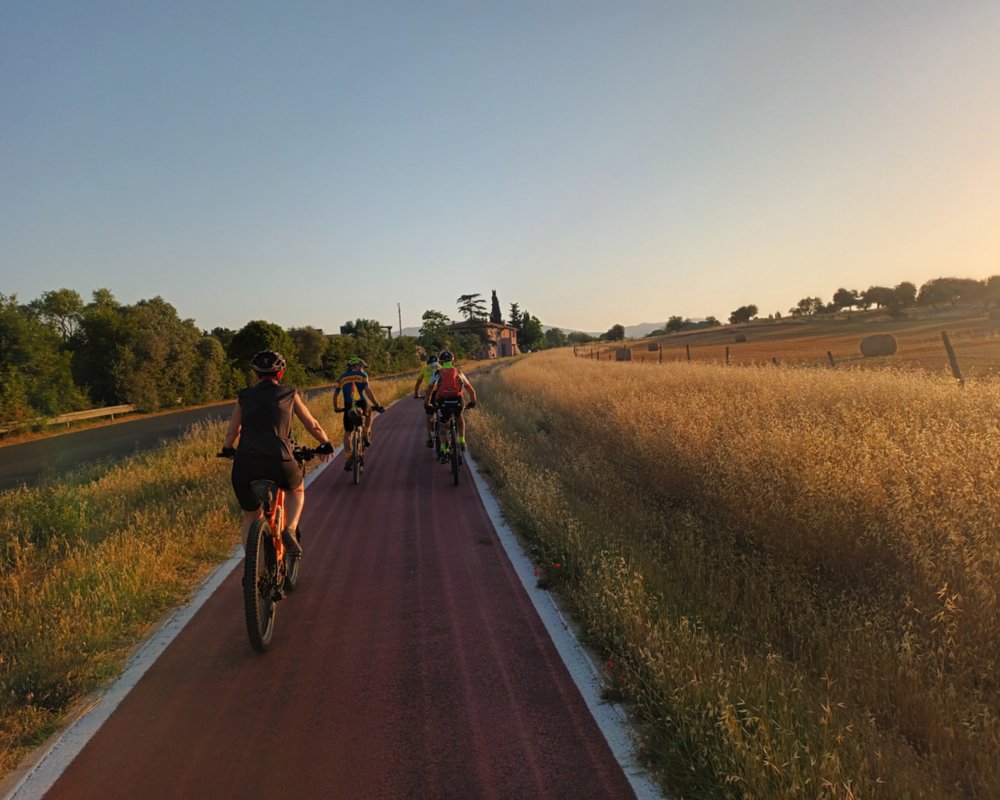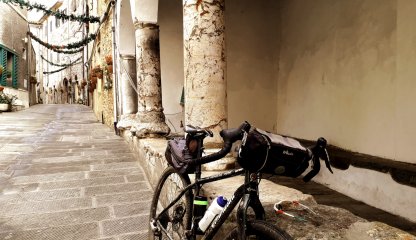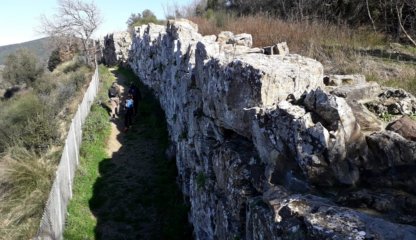Batignano and the Roselle Archaeological Park by bike



Dedicated to those approaching cycling without too much experience, this itinerary allows you to discover the archaeological treasures that link the Grosseto Maremma to the Etruscan-Roman culture. Roselle was urbanized by the Etruscans in the 7th century B.C. on high ground that allowed them to control a vast portion of territory over which, at the time, stretched the Prile Lake, a large lagoon communicating with the sea. The itinerary leads to the archaeological area along an easy bike path that meanders through olive groves to below the hill where the Etruscan-Roman city stands, but reaches it after passing through Nomadelfia. A fertile and industrious valley, the area is inhabited by a community population of Catholic volunteers, founded by Don Zeno in Fossoli (Modena) in 1941 and transferred to Grosseto in 1952. The passage from Batignano, a charming medieval village perched on the hill overlooking the Grosseto plain, precedes the arrival under the cyclopean walls of the ancient city of Roselle.
The itinerary starts from the ancient Leopoldine Thermal Baths of Roselle, now the headquarters of the Pro Loco. Proceed following the beautiful bicycle path that runs along Via Batignanese to the E78 underpass. Temporarily leaving the bicycle path, take the underpass following the signs for Nomadelfia - Sementarecce and going up the Strada della Valle, which crosses the valley of Nomadelfia, we will be attracted by the wide panoramic views of the archaeological zone of Roselle and the hillock of Moscona on whose summit rises, still majestic, the fortress of the Montecurliano Castle. Known as the Tino di Moscona, the fortress is a circular fortified structure, atypical for the Sienese era to which it dates, where the powerful Aldobrandeschi family had laid the first foundations for a future city.
As we travel through the Nomadelfia valley, we climb the banks of the Salica stream, along which the remains of ancient watermills can still be seen. We follow the ribbon of tarmac keeping the stream on our right until we catch a glimpse, among the foliage of cork trees beyond characteristic dry stone walls, of the medieval village of Batignano. Strategically located for the exploitation of the area's ancient copper and silver metal seams, within its walls the village preserves the Romanesque parish church of San Martino, the baroque-style Church of the Confraternity of St. Joseph and, at the end of the charming Via di Mezzo, a three-arched loggia built with reused Roman columns and capitals, probably from Roselle. From Via della circonvallazione there is a splendid view of the Roselle archaeological area nestled between the Moscona and Nomadelfia hillocks.
Back on our bikes we will freewheel down the Provincial Road Batignanese until we find the E78 underpass, and then turn left onto the Strada dei Ruderi. After a few hundred meters we will encounter the Visitor Center of the Roselle Archaeological Park and shortly after, on the left, the first vestiges of the Etruscan civilization, which anticipate the archaeological area that we will reach after riding a short but intense climb full of funerary evidence. A visit to the archaeological area within the mighty cyclopean walls, which conceal the vestiges of the Etruscan-Roman city of Roselle, will leave us amazed by the magnificence that Roman architects had been able to give to the perspective plans of this incredible site that rose overhanging the ancient Prile lake. On the way back, just let the wheels of the bike slide for the 6 kilometers separating us from the Leopoldine Thermal Baths of Roselle, the starting and ending point of the itinerary.